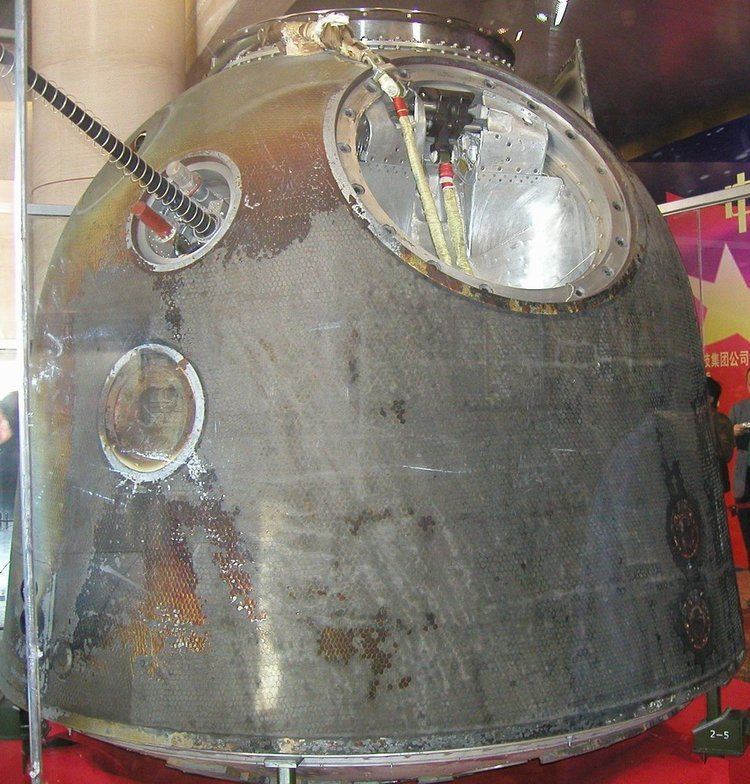 | ||
A re-entry capsule is the portion of a spacecraft which returns to Earth following a space flight. The shape is determined partly by aerodynamics; a capsule is aerodynamically stable falling blunt end first, which allows only the blunt end to require a heat shield for atmospheric re-entry. Its shape has also been compared to that of an old-fashioned automobile's headlight. A manned capsule contains the spacecraft's instrument panel, limited storage space, and seats for crew members. Because a capsule shape has little aerodynamic lift, the final descent is via parachute, either coming to rest on land, at sea, or by active capture by another aircraft. In contrast, the development of spaceplane re-entry vehicles attempts to provide a more flexible re-entry profile.
Contents
Shenzhou
The re-entry capsule is the "middle" module of the three-part Soyuz or Shenzhou spacecraft – the orbital module is located at the front of the spacecraft, with the service or equipment module attached to the rear. A feature in the landing system allows the use of a single parachute and "braking rocket," thus the heatshield is dropped from the spacecraft similar to the landing bag deployment on the U.S. Mercury spacecraft. Like the Command Module of the Apollo spacecraft, the Shenzhou re-entry capsule has no reusable capabilities; each spacecraft is flown once and then "thrown away" (usually sent to museums).
Few details are known about the Shenzhou re-entry capsule, except that it uses some technology from the Soyuz TM design. The new Soyuz TMA spacecraft, now used solely for International Space Station flights, had its couches modified to allow for taller crewmembers to fly, and features "glass cockpit" technology similar to that found on the Space Shuttle and newer commercial and military aircraft.
Soyuz
The former Soviet Union suffered two disasters, and one near-disaster, all three involving the capsule during the de-orbit and re-entry. Soyuz 1 ended in disaster when the parachutes failed to deploy and the capsule smashed into the earth at speeds over 300 mph, killing cosmonaut Vladimir Komarov. Soyuz 5 almost ended in disaster, when the re-entry capsule entered the atmosphere on the wrong end – attributed to a failure of the equipment module to separate similar to that on the Vostok 1 flight. Luckily, the equipment module burned off the descent module and the capsule righted itself.
Soyuz 11 ended in disaster in 1971 when an equalization valve, used to equalize air pressure during the Soyuz final descent, prematurely opened in the vacuum of space, killing the three crew members, who were not wearing spacesuits. Subsequent flights, from Soyuz 12 to Soyuz 40, utilized a two-man crew because the third seat had to be removed for the pressure suit controls. The Soyuz-T version restored the third seat.
